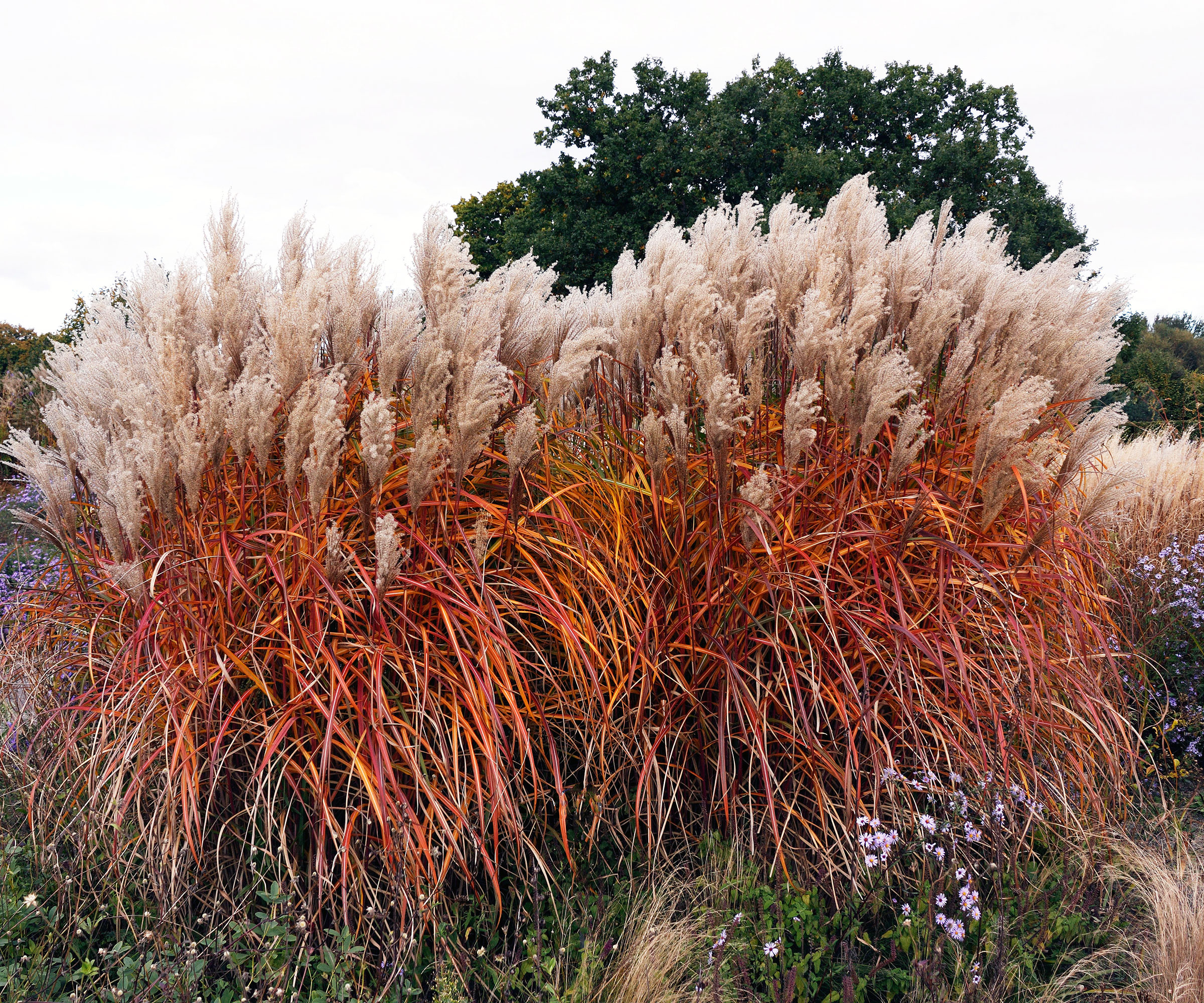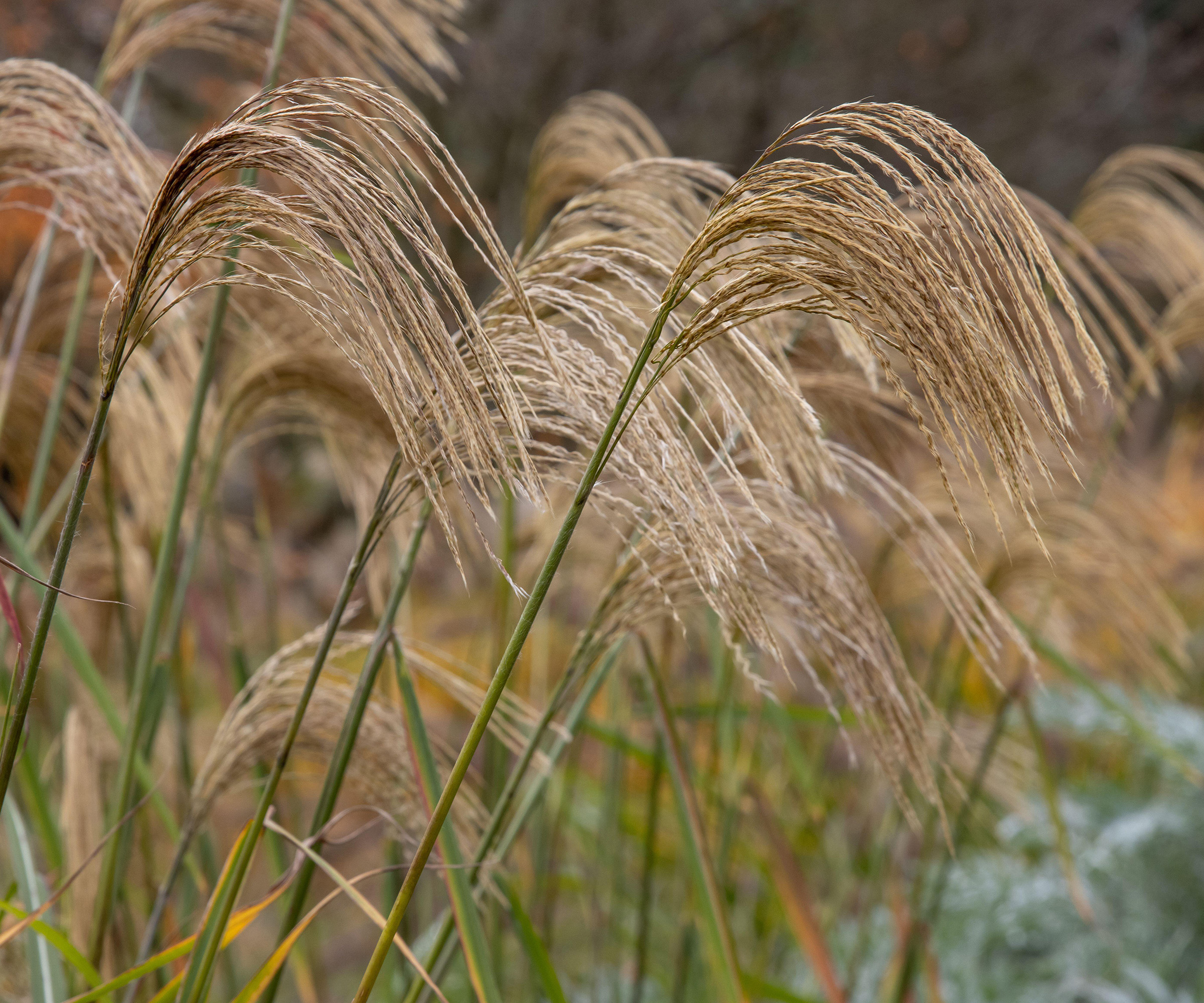
Miscanthus are fantastic, dependable, and low-maintenance ornamental grasses that come in a wide range of sizes and offer a wealth of benefits to a backyard space. Growing arcs of foliage topped with feathery plumes come summer, miscanthus are ornamental grasses that can offer year-round interest as part of any backyard.
Also commonly known as maiden grass or Chinese silver grass, they are varied and versatile plants. There are large and imposing miscanthus that can tower at the back of beds or borders, all the way down to dwarf varieties that allow you to enjoy the rewards of miscanthus in small backyards.
Yes, these popular plants may be easy to grow and look after, but they do need pruning annually. Cutting back miscanthus each year is going to be an essential part of any maintenance regime - though you will be thankful to hear it is a simple task to do.

Do you cut back miscanthus?
It is important to prune your miscanthus annually to keep the plant thriving and looking at its absolute best. Cutting back the ornamental grass can help to manage the size and shape of any miscanthus variety, on top of promoting healthy growth each year and preventing diseases.
If you have miscanthus as part of your backyard ideas at home, discover tips for when and how to cut back the grass correctly.
When to cut back miscanthus

The best time to cut back miscanthus is during the late winter or early spring. The deciduous grass will turn brown during the colder months as the old foliage dies annually. One of the main aims of pruning miscanthus is to remove all these older leaves so the new growth for the coming year can come through without any problems. Removing all the old foliage also boosts the aesthetics of the plant and leaves it ready for another season of vigorous growth.
The ideal timing will be to cut back the grass in February or March, just as you see new growth start appearing at the base of the plant. If you see green shoots occurring, then take that as a sign to head out and prune.
The exact time the miscanthus will start putting out new growth will depend on your climate and US hardiness zone. Leaving it too long can be a pruning mistake, as trying to cut from mid-to-late spring onwards could lead to a struggle to separate the old and new growth.
However, while most gardeners will opt to cut in late winter or early spring, there are some people who prefer to cut back miscanthus in the fall. This is a completely acceptable practice, though you do miss out on the benefits that miscanthus can offer in a winter garden. The grass can still look delightful in the winter and provide habitat and food for wildlife.
‘Keep in mind that pruning in fall may expose the plant to winter conditions, so be cautious in colder regions,’ warns Sheila Crean of Atkins Garden Shop. ‘Whether fall or late winter, the choice depends on your preference for garden aesthetics and how you want your landscape to look during the colder months.’
If you do live in a colder region, it is recommended to prune in late winter, as leaving the old foliage in place throughout the colder months can provide natural insulation to the crown of the grass. Those in warmer climates can consider adding pruning miscanthus to their fall garden checklist.
How to cut back miscanthus

Miscanthus are very low maintenance plants and that has played its part in their popularity in many people’s backyard landscaping ideas. The good news is that cutting back miscanthus is a very simple task to complete, and should not take much longer than a few minutes to cut back each clump of the grass.
Only a few basic garden tools are required too. You won’t need anything more than a pair of clean and sharp pruning shears, some rope or string, and a pair of gardening gloves. Wearing gloves and also long sleeves is recommended when cutting back any grasses, to prevent you being cut on your arms or hands by the sharp blades of the grass.
Alexander Testel from Frugal Frontier advises how pruning can be done in three simple steps each year to ‘maintain the plant's structural integrity and aesthetic appeal, ensuring it remains a focal point in any garden’.
- Tie up the grass: Secure the miscanthus with rope to prevent the stems and leaves from scattering when cut.
- Cutting back: Trim the entire plant back to 6 to 10 inches above the ground. It is important to not cut any lower than 6 inches as you then risk cutting into the crown of the plant.
- Dispose of debris: Remove any dead or matted material to promote air circulation and new growth. The trimming can be chopped up and used to make compost, however, if the old foliage shows any signs of disease then it is best to bag it up and destroy it.
If the miscanthus clump you cut back has gotten very large, then you can consider dividing the plant at the same time. Separating an overgrown clump into sections is a simple way to rejuvenate the plant and get more miscanthus for your backyard.
Tools for cutting back miscanthus
A pair of study gardening gloves that are puncture-proof and thornproof, making them suitable for a wide range of backyard tasks - including cutting back grasses
A pair of bypass pruning shears with a Japanese grade, high-carbon steel blade to make sharp cuts when doing any pruning
Traditional pruning shears with a fully hardened, precision-ground steel blade and non-slip grips on the handle to help make pruning simple
FAQs
Do you cut back miscanthus in winter?
It is not recommended to cut back miscanthus in winter, as it risks subjecting the crown of the plant to harsh winter conditions. It could end up being damaged by snow and frosts. Established miscanthus do tend to be cold hardy in US hardiness zones 5-9, though frosts can penetrate the wounds left by any winter pruning and get into the crown itself.
Do you cut back Miscanthus giganteus?
Miscanthus giganteus is a particularly tall form of miscanthus that can grow to almost 10 feet in height. It does need to be cut down each year to promote annual healthy growth and prevent diseases.
Miscanthus are popular grasses for the recent backyard trend of prairie planting. The elegant grass does enjoy a sunny border and can look fantastic mixed through a naturalistic planting scheme.







